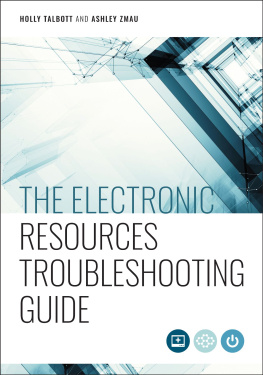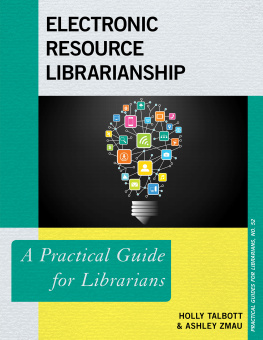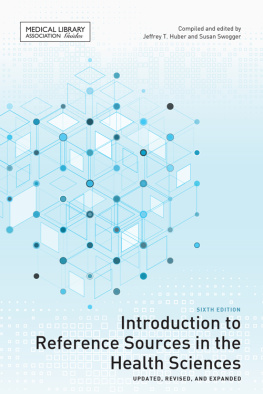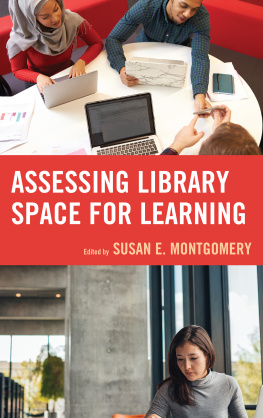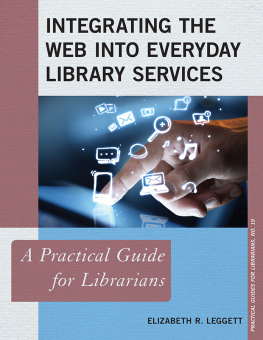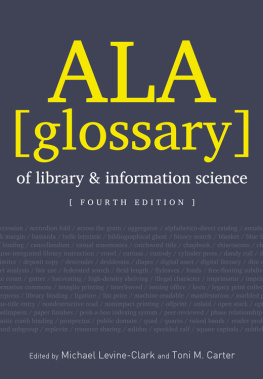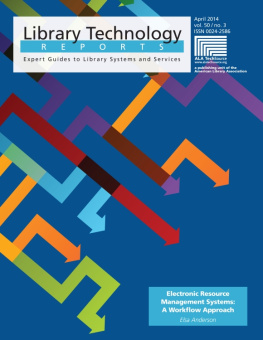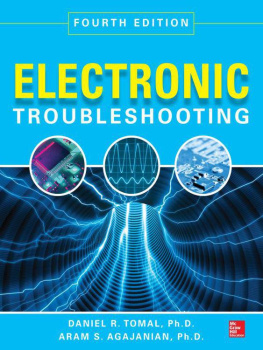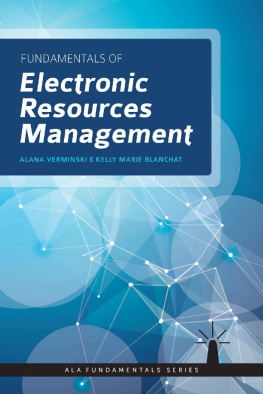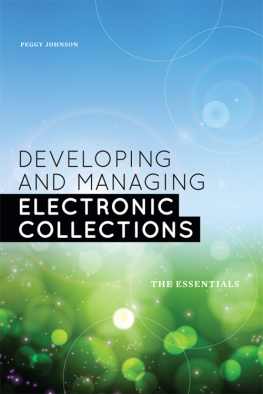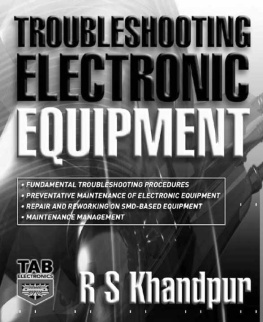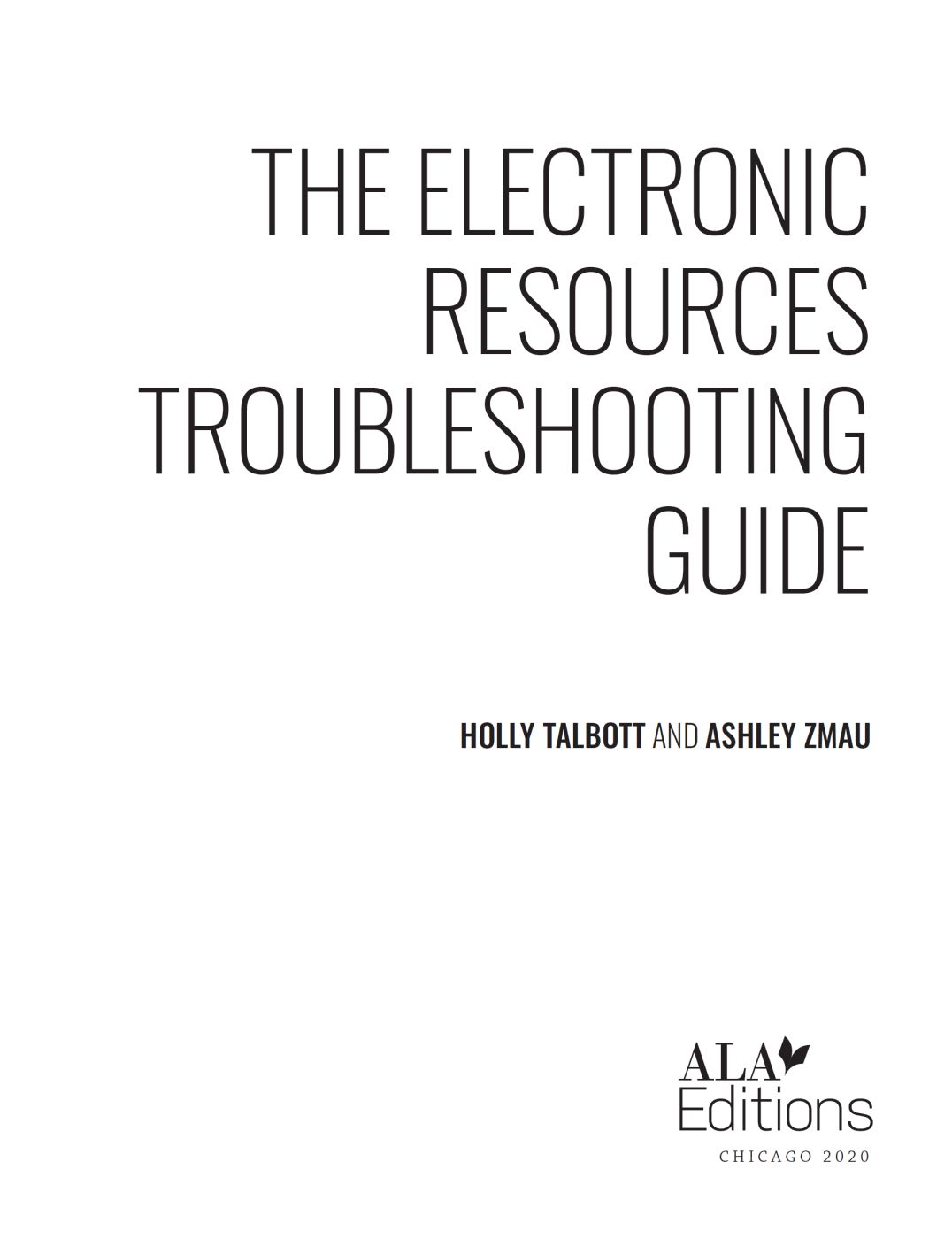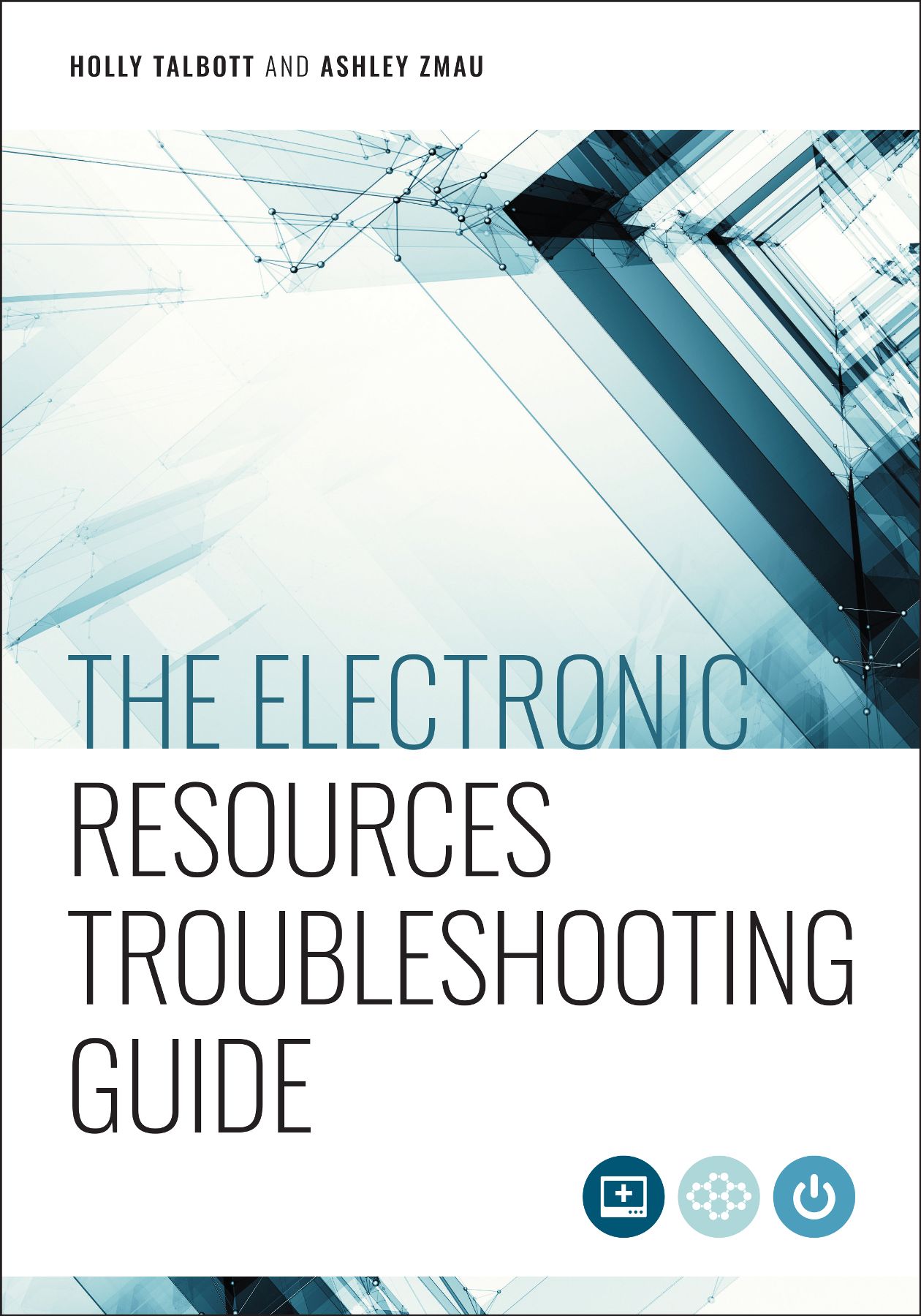
ALA Editions purchases fund advocacy, awareness, and accreditation programs for library professionals worldwide.
Holly Talbott has more than six years of experience with electronic resources and is coauthor of Electronic Resources Librarianship: A Practical Guide for Librarians (Rowman & Littlefield, 2018). She is the electronic resources librarian at Kent State University and was previously the electronic resources and licensing librarian at the University of Arizona Libraries and the electronic resources librarian at Lasell College.
Ashley Zmau has more than ten years of academic library experience and is coauthor of Electronic Resources Librarianship: A Practical Guide for Librarians (Rowman & Littlefield, 2018). She is the serials cataloger for the Dallas County Community College District and was previously the electronic resources librarian at the University of Texas at Arlington and the electronic resources management librarian at Southern Methodist University.
2020 by Holly Talbott and Ashley Zmau
Extensive effort has gone into ensuring the reliability of the information in this book; however, the publisher makes no warranty, express or implied, with respect to the material contained herein.
ISBNs
978-0-8389-4764-7 (paper)
978-0-8389-4791-3 (PDF)
978-0-8389-4793-7 (ePub)
978-0-8389-4792-0 (Kindle)
Library of Congress Cataloging-in-Publication Data
Names: Talbott, Holly, 1987- author. | Zmau, Ashley, 1988- author.
Title: The electronic resources troubleshooting guide / Holly Talbott and Ashley Zmau.
Description: Chicago : ALA Editions, 2020. | Includes bibliographical references and index. | Summary: This guide shows you how to develop a library-wide workflow and a shared understanding of the components delivering electronic resources to your patronsProvided by publisher.
Identifiers: LCCN 2020010139 (print) | LCCN 2020010140 (ebook) | ISBN 9780838947647 (paperback) | ISBN 9780838947913 (pdf) | ISBN 9780838947920 (kindle edition) | ISBN 9780838947937 (epub)
Subjects: LCSH: LibrariesSpecial collectionsElectronic information resources. | Electronic information resourcesManagement. | Problem solving.
Classification: LCC Z692.C65 T354 2020 (print) | LCC Z692.C65 (ebook) | DDC 025.17/4dc23
LC record available at https://lccn.loc.gov/2020010139
LC ebook record available at https://lccn.loc.gov/2020010140
Cover design by Alejandra Diaz. Cover image 1xpert.
CONTENTS
The Importance of Troubleshooting
Electronic resources are ubiquitous in libraries today. From e-books to open access journals, streaming videos to specialized content databases, libraries are relying more and more on electronic content to fill their patrons information needs. In 2016, libraries worldwide spent an estimated 61 percent of their budgets on e-books, e-journals, databases, streaming media, and other online content (Publishers Communication Group 2017). That number is only expected to grow as the variety in content, purchase models, and availability of e-resources continues to proliferate.
Behind the scenes, librarians are busy stewarding this large portion of their budgets, carefully curating e-resources and ensuring their access and discoverability for patrons. However, with the volume and diversity of vendors, platforms, and access models, e-resources are susceptible to technology failures. These failures have a direct and measurable impact on user experience, and the failure of those resources to perform reflects poorly on the library and the institution (Wright 2016, 205). Therefore, establishing a strong troubleshooting workflow and staff, whose highest priority is customer service, is essential. With effective troubleshooting, a library can reduce patron frustration, foster a positive image of the library, increase the visibility of library services for patrons, and practice sound financial stewardship.
Unfortunately, as library systems continue to grow in number and complexity, librarians are often at a loss when confronted with sudden breaks in access, unsure what caused them, how to fix them, or where to turn for answers. In The Electronic Resources Troubleshooting Guide, we aim to fill this gap, equipping librarians with not only the knowledge and skills to diagnose and resolve access issues but also practical approaches for creating and maintaining effective workflows, recruiting and training staff across multiple departments, and making the most of their help ticket systems. Librarians will learn how to do the following:
- solicit problem reports
- conduct troubleshooting interviews
- recognize the symptoms of common access issues
- communicate with vendors and information technology (IT) personnel for speedy resolutions
- establish triage and troubleshooting workflows
- manage problem reports in either a commercial or a homegrown system
- train others to troubleshoot in a collaborative team environment
Structure of the Book
lays the conceptual groundwork for the remainder of the book by discussing basic ideas of problems and problem solving upon which troubleshooting relies. We also explore the base attributes, skill sets, and infrastructure that directly influence how effective troubleshooters are in their work. By drawing on concepts outside the library science literature, we hope to jump-start your imagination to think differently about troubleshooting.
In we get technical, discussing the foundational systems knowledge necessary for designing and implementing an effective troubleshooting workflow. We begin with a thorough analysis of e-resource access chains before covering how to gather problem reports: what information to collect, how to conduct a troubleshooting interview, and how to work with both internal and external reporters throughout this process. We then move into problem diagnosis, focusing on the types and origins of metadata and how their utilization creates opportunities for failure within library systems. We end our technology section with a discussion on strategies to diagnose symptoms of common issues, as well as how to identify and handle systemic issues.
In we discuss project management, troubleshooting workflows, team troubleshooting, training others, and proactive troubleshooting. We speak at length about team troubleshooting, covering topics related to interpersonal dynamics, expectation management, and the involvement of nontroubleshooting team library staff members. Finally, we cover what you can learn from analyzing your librarys problem reports and the various preventative maintenance routines that represent proactive troubleshooting.
Acting as a ready reference, The Electronic Resources Troubleshooting Guide will help librarians move beyond triage and temporary fixes by offering techniques for effective problem solving and proactively addressing access issues. With a little foresight and know-how, all librarians can feel confident when helping patrons, regardless of their positions or technology backgrounds.
REFERENCES
Publishers Communication Group (PCG). 2017. Library Budget Predictions for 2017: Results from a Telephone Survey. Boston, MA: PCG. www.pcgplus.com/wp-content/uploads/2017/05/Library-Budget-Predictions-for-2017-public.pdf.
Wright, Jennifer. 2016. Electronic Outages: What Broke, Who Broke It, and How to Track It.

